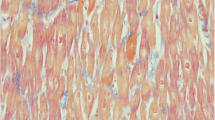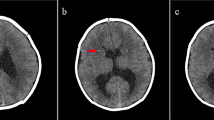Abstract
Primary carnitine deficiency (PCD) is an autosomal recessive disorder of fatty acid oxidation caused by mutations in the SLC22A5 gene encoding for the carnitine transporter OCTN2. Carnitine uptake deficiency results in renal carnitine wasting and low plasma levels. PCD usually presents early in life either with acute metabolic crisis or as progressive cardiomyopathy that responds to carnitine supplementation. PCD inclusion in the newborn screening (NBS) programs has led to the identification of asymptomatic adult patients ascertained because of a positive NBS in their offspring. We extensively reviewed the literature and found that 15 of 42 adult published cases (35.7%) were symptomatic. Cardiac arrhythmias were present in five patients (12%). Here, we report the ascertainment and long-term follow-up of the first case of PCD presenting with long QT syndrome. The patient presented in her early twenties with a syncopal episode caused by ventricular tachycardia, and a prolonged QT interval. Arrhythmias were poorly controlled by pharmacologic therapy and a defibrillator was installed. Syncopal episodes escalated during her first pregnancy. A positive NBS in the patient’s child suggested a carnitine uptake deficiency, which was confirmed by reduced carnitine transporter activity and by molecular testing. After starting carnitine supplementation, no further syncopal episodes have occurred and the QT interval returned to normal. As precaution, a low-dose metoprolol therapy and the defibrillator are still in place. Although rare, PCD should be ruled out as a cause of cardiac arrhythmias since oral carnitine supplementation is readily available and efficient.
Competing interests: None declared.
Access provided by Autonomous University of Puebla. Download chapter PDF
Similar content being viewed by others
Keywords
These keywords were added by machine and not by the authors. This process is experimental and the keywords may be updated as the learning algorithm improves.
Introduction
Systemic primary carnitine deficiency (PCD; OMIM#212140) is an autosomal recessive disorder of the carnitine cycle impairing fatty acid oxidation. PCD is caused by mutations in the SLC22A5 gene that encodes for the high-affinity carnitine transporter OCTN2 (Nezu et al. 1999). Carnitine transporter defects result in renal wasting of carnitine, low plasma carnitine levels (free carnitine <5 μM), and intracellular carnitine deficiency. Carnitine allows the entry of long-chain fatty acids into mitochondria for subsequent β-oxidation. Carnitine deficiency results in defective energy production from fat during fasting or stress. The diagnosis is suspected because of low plasma carnitine levels with normal renal function and acylcarnitine profile. The diagnosis is confirmed by reduced carnitine transporter activity in fibroblasts or mutational analysis of the SLC22A5 gene.
The incidence of PCD is about 1:40,000 with a carrier rate of approximately 1% (Wilcken et al. 2003). Patients can present early in life with acute metabolic crisis, hepatic encephalopathy, hypoketotic hypoglycemia, Reye syndrome, or sudden death. Some patients have the insidious onset of progressive cardiomyopathy with or without muscle weakness and hypotonia. Left untreated, the disease is severe and may be fatal (Stanley et al. 1991). Carnitine supplementation prevents symptoms and reverses cardiomyopathy, supporting PCD inclusion in expanded NBS programs. Wide-scale NBS has led to the identification of asymptomatic affected mothers whose newborns screen positive for low carnitine, as well as other asymptomatic family members (Spiekerkoetter et al. 2003; Vijay et al. 2006; Schimmenti et al. 2007; El-Hattab et al. 2010; Lee et al. 2010; Li et al. 2010; Sarafoglou et al. 2010). However, the disorder is unlikely a benign condition in adults. Fifteen of the forty-two published cases ascertained in adulthood (35.7%) because of a positive NBS in the offspring or through family history were symptomatic (Table 1). Cardiac arrhythmias were described in five patients (12%) (Schimmenti et al. 2007; El-Hattab et al. 2010; Lee et al. 2010; Li et al. 2010), as well as in heterozygous carriers of SLC22A5 mutations (Sarafoglou et al. 2010). The impact of carnitine supplementation on cardiac abnormalities is still unclear in these patients. Here, we report the long-term follow-up of a case of PCD presenting atypically with long QT syndrome.
Case Report
A 20-year-old Caucasian woman presented with a syncopal episode caused by ventricular tachycardia. Family history was negative for long QT interval or significant cardiovascular events. Prior to the episode, she lived an active lifestyle with no episodes of hypoglycemia, liver problems, or muscle weakness. No signs of cardiomyopathy were present and echocardiogram was completely normal. Upon hospitalization, therapy with metoprolol (50 mg/day) was started and a defibrillator was implanted. Over the following 5 years, the cardiac symptoms were difficult to control with pharmacologic therapy, and the patient experienced three more syncopal events. An ECG showed prolonged QT interval (QT 355 ms; QTc 441 ms, normal range <440 ms). At age 25, she had multiple syncopal episodes after becoming pregnant. At 14 weeks of gestation, metoprolol was increased (75 mg/day) and mexiletine (450 mg/day) was added. No more episodes occurred during the remainder of her pregnancy.
PCD was eventually diagnosed after her newborn daughter screened positive for low free carnitine. The patient’s plasma carnitine levels were extremely low (total carnitine: 3.0 μM, normal range 26–69 μM; free: 1.9 μM, normal range 16–60 μM). Carnitine uptake in fibroblasts was reduced to 4.8% of normal controls, and molecular analysis of the SLC22A5 gene showed two changes, c.95 A>G (p.N32S) and c.136 C>G (p.P46S) (Schimmenti et al. 2007). Alternative genetic causes of long QT syndrome were not excluded in our patient. Treatment with high doses of carnitine (3,960 mg/day) was initiated immediately, and has been continued to date. Since the beginning of carnitine treatment, plasma carnitine levels have been within normal limits (at the last visit, total carnitine 47.95 μM, normal range 26–69 μM, free carnitine 36.05 μM, normal range 16–60 μM), no further syncopal episodes have occurred and the QT interval has returned to normal (QT 360 ms, QTc 408 ms, normal range <440 ms). Treatment with carnitine allowed lowering of the metoprolol dose (25 mg/day) and discontinuation of other drugs. However, as a precaution, our patient still carries a defibrillator. At the last cardiologic evaluation, the patient’s echocardiogram remains normal. A second pregnancy was uneventful.
Discussion
Systemic PCD is a rare disorder that usually presents in childhood with metabolic crisis or with progressive cardiomyopathy. Cardiomyopathy, which is frequent in infantile patients, is not commonly seen in adults. Among reported cases, dilated cardiomyopathy was present only in one patient (Lee et al. 2010) and excluded in most of the others. Moreover, PCD mutations are no more frequent in adult patients with cardiomyopathy than in the general population (Amat di San Filippo et al. 2008). Cardiac arrhythmias were present in five PCD patients (12%) ascertained in adulthood (Schimmenti et al. 2007; El-Hattab et al. 2010; Lee et al. 2010; Li et al. 2010), suggesting that carnitine uptake deficiency should be considered as a potential cause of unexplained cardiac arrhythmias. Our case also shows that a long QT interval may be present in PCD.
We did not rule out mutations in the 12 different genes associated with long QT syndromes. To our knowledge, a cardiac calcium channel mutation has been found only in one case of adult-onset PCD presenting with short QT interval (Labarthe et al. 2009). A causal relationship between cardiac arrhythmias and PCD has not yet been established, although in our patient carnitine supplementation prevented further syncopal episodes. Long-term data are essential to establish the relationship between arrhythmias and carnitine deficiency. Recently, heterozygosity for PCD mutations has been associated with cardiac arrhythmias that resolved after carnitine treatment (Sarafoglou et al. 2010). PCD may have a much higher incidence than originally described as has been noted in the Faroe Islands (Lund et al. 2007). Additionally, asymptomatic males are less likely to be identified through NBS. Although rare, PCD should be routinely investigated as a cause of cardiac arrhythmias since episodes could be prevented by oral carnitine supplementation.
References
Amat di San Filippo C, Taylor MR, Mestroni L, Botto LD, Longo N (2008) Cardiomyopathy and carnitine deficiency. Mol Genet Metab 94:162–166
El-Hattab AW, Li FY, Shen J et al (2010) Maternal systemic primary carnitine deficiency uncovered by newborn screening: clinical, biochemical, and molecular aspects. Genet Med 12:19–24
Labarthe F, Benoist JF, Peralta M, et al (2009) Primary carnitine uptake deficiency is associated with short QT syndrome and ventricular fibrillation. Poster 327 presented at the 11th international congress of inborn error of metabolism. Mol Genet Metab
Lee NC, Tang NL, Chien YH et al (2010) Diagnoses of newborns and mothers with carnitine uptake defects through newborn screening. Mol Genet Metab 100:46–50
Li FY, El-Hattab AW, Bawle EV et al (2010) Molecular spectrum of SLC22A5 (OCTN2) gene mutations detected in 143 subjects evaluated for systemic carnitine deficiency. Hum Mutat 31:E1632–E1651
Lund AM, Joensen F, Hougaard DM et al (2007) Carnitine transporter and holocarboxylase synthetase deficiencies in the Faroe Islands. J Inherit Metab Dis 30:341–349
Nezu J, Tamai I, Oku A et al (1999) Primary systemic carnitine deficiency is caused by mutations in a gene encoding sodium ion-dependent carnitine transporter. Nat Genet 21:91–94
Sarafoglou K, Tridgell AH, Bentler K, Redlinger-Grosse K, Berry SA, Schimmenti LA (2010) Cardiac conduction improvement in two heterozygotes for primary carnitine deficiency on L-carnitine supplementation. Clin Genet 78:191–194
Schimmenti LA, Crombez EA, Schwahn BC et al (2007) Expanded newborn screening identifies maternal primary carnitine deficiency. Mol Genet Metab 90:441–445
Spiekerkoetter U, Huener G, Baykal T et al (2003) Silent and symptomatic primary carnitine deficiency within the same family due to identical mutations in the organic cation/carnitine transporter OCTN2. J Inherit Metab Dis 26:613–615
Stanley CA, DeLeeuw S, Coates PM et al (1991) Chronic cardiomyopathy and weakness or acute coma in children with a defect in carnitine uptake. Ann Neurol 30:709–716
Vijay S, Patterson A, Olpin S et al (2006) Carnitine transporter defect: diagnosis in asymptomatic adult women following analysis of acylcarnitines in their newborn infants. J Inherit Metab Dis 29:627–630
Wilcken B, Wivoley V, Hammond J, Carpenter K (2003) Screening newborns for inborn errors of metabolism by tandem mass spectrometry. N Engl J Med 348:2304–2312
Acknowledgment
We thank the Greenwood Genetic Center metabolic team for the help during our patient follow up. We also thank Dr. Roger Stevenson for the helpful comments and for editing the manuscript. Dr. Nicola Longo is supported by grant R01-DK053824 from the National Institute of Diabetes And Digestive And Kidney Diseases.
Author information
Authors and Affiliations
Corresponding author
Editor information
Editors and Affiliations
Additional information
Communicated by: Jerry Vockley.
Synopsis
Synopsis
The ascertainment and the 5-year follow up are described for an adult case of PCD presenting atypically with long QT syndrome successfully treated with carnitine supplementation.
Rights and permissions
Copyright information
© 2011 SSIEM and Springer-Verlag Berlin Heidelberg
About this chapter
Cite this chapter
De Biase, I., Champaigne, N.L., Schroer, R., Pollard, L.M., Longo, N., Wood, T. (2011). Primary Carnitine Deficiency Presents Atypically with Long QT Syndrome: A Case Report. In: JIMD Reports - Case and Research Reports, 2011/2. JIMD Reports, vol 2. Springer, Berlin, Heidelberg. https://doi.org/10.1007/8904_2011_52
Download citation
DOI: https://doi.org/10.1007/8904_2011_52
Received:
Revised:
Accepted:
Published:
Publisher Name: Springer, Berlin, Heidelberg
Print ISBN: 978-3-642-24757-6
Online ISBN: 978-3-642-24758-3
eBook Packages: MedicineMedicine (R0)




